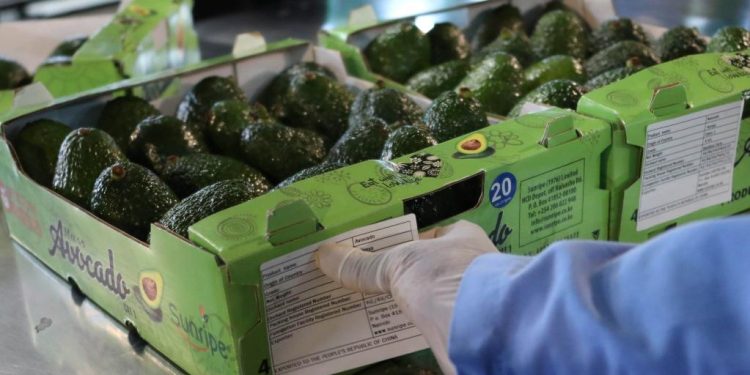Uganda stood out as a key market for Kenya’s export earnings in 2023, a year during which Kenya sold most of its products to Africa than the rest of the world.
- In overall, revenue from exports to the Africa region last year recorded an increase of 21.6 per cent from KSh 357.7 billion in 2022 to KSh 435 billion in 2023.
- Uganda continued to be the leading destination of Kenya’s exports accounting for 29.0 per cent of the total export earnings from Africa in 2023.
- Total exports Uganda amounted to KSh 126.3 billion in the review period, depicting an increase of 29.9 per cent compared to 2022. This was mainly occasioned by an increase in exports of cement clinkers, lubricants and products of iron and steel.
Within the East African Community region, Tanzania and South Sudan also emerged as key trading partners with exports to Tanzania and South Sudan rising by 20.7 per cent and 36.2 per cent from 2022 to KSh 69.3 billion and KSh 32.0 billion in the review period, respectively.
This was partly on account of increased domestic exports of soap and medicaments to Tanzania and food preparations to South Sudan.
“Earnings from exports to the Common Market for Eastern and Southern Africa (COMESA) region increased by 21.8 per cent to KSh 319.5 billion in 2023 from KSh 262.3 billion in 2022. This growth was largely supported by exports to the EAC region who are also members of the COMESA, except Tanzania,” states the Economic Survey by KNBS.
Notably, there was remarkable increase in the domestic exports of cigarettes to Democratic Republic of Congo. In addition, exports to Somalia recorded an increase of 41.2 per cent, partly on account of increase in domestic exports of cigarettes to this destination.
According to the survey, import expenditure from Africa in 2023 marginally increased from KSh 273.6 billion in 2022 to KSh 277.0 billion. Particularly, there was increased importation of maize from South Africa, partly contributing to the rise in overall import expenditure from Africa.
Kenya’s Export Earnings Outside Africa
Export earnings from Asia recorded an increase of 19.3 per cent from KSh 217.6 billion in 2022 to KSh 259.7 billion in 2023, majorly contributed by increase in exports to Pakistan, United Arab Emirates and Saudi Arabia.
Exports to Pakistan and United Arab Emirates went up by 23.1 per cent and 27.0 per cent, respectively, largely occasioned by increase in domestic exports of tea to these destinations. Similarly, exports to Saudi Arabia grew by 46.3 per cent, partly driven by increase in domestic exports of tea and goat meat.
Value of total exports to the European Union (EU) registered an improvement of 12.7 per cent in 2023, rising from KSh 133.2 billion in 2022. The rise was partly contributed by increase in domestic exports of cut flowers and avocados to the Netherlands and beans to France.
Similarly, foreign export earnings from the United Kingdom rose from KSh 44.6 billion in 2022 to KSh 54.7 billion in 2023, largely driven by increase in domestic exports of tea and cut flowers.
On the contrary, export earnings from the Russian Federation declined by 37.5 per cent in the same review period, largely on account of decreased domestic exports of tea to this destination.
Asia continued to account for the bulk of the import bill at 66.5 per cent of total import expenditure. The sustained import expenditure was partly supported by increase in the value of imports from Singapore (87.1 per cent), Indonesia (51.9 per cent), Saudi Arabia (18.9 per cent), and India (7.6per cent).
The imported commodities from these sources that largely contributed to the growth were; rice from India, crude palm oil from Indonesia, motor spirit (gasoline) premium from Singapore, and Gas oil from Saudi Arabia.
In contrast, there were remarkable decreases in imports from South Korea and Taiwan, which jointly declined by KSh 30.4 billion in the period under review. The decline was primarily on account of reduced importation of kerosene type jet fuel from South Korea, and motor spirit (gasoline) premium from Taiwan.
On the Eastern Europe front, imports from Russian Federation and Ukraine rose significantly from KSh 36.8 billion and KSh 5.3 billion to KSh 82.7 billion and KSh 10.2 billion, respectively.
The increase was largely on account of increased importation of wheat and chemical fertilizers from Russian Federation; and wheat, dried peas and maize from Ukraine, partly facilitated by the Black Sea Initiative, which specifically allows safe export of grain, fertilizers and other foodstuff from Ukrainian ports through the Black Sea.
See Also:




